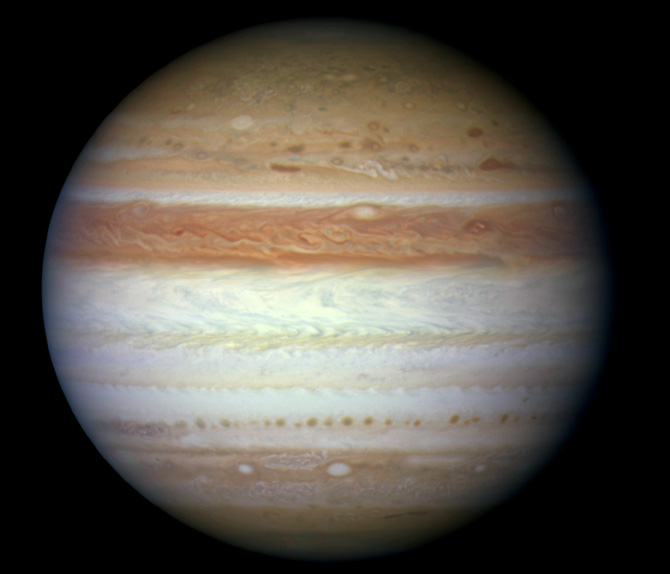Science News
Jupiter's Missing Belt
June 23, 2010

In May, when the planet Jupiter emerged from the glare of the Sun (where it had been hiding since December) to appear in the predawn sky, Australian amateur astronomer Anthony Wesley photographed the giant planet and made an amazing discovery: one of its two usually-prominent belts of dark clouds was missing. These long-lived dark bands in the atmosphere typically appear as a pair of stripes across the planet’s face, and it was an unexpected surprise to see that the Southern Equatorial Belt had disappeared. Hubble confirmed the findings earlier this month. Subsequent photos also displayed that the famous Great Red Spot, which usually nestles partly within the missing belt, appears unchanged.
What happened to the belt? Will it return?
The belt is a globe-girdling band of sinking, chemically-stained gases resulting from convective processes in Jupiter’s atmosphere, and it is known to have vanished on previous occasions – most recently in 1973 and again in the early 1990s – but astronomers weren’t been able to explain why. The current thinking is that a short-lived, high-altitude haze of ammonia ice crystals has hidden the darker cloud belt below and should start dissipating in a few months. Already, the presence of a chain of dark spots along the southern edge of the Southern Equatorial Belt’s location is said to indicate an imminent change. Keep watching Jupiter – currently visible in the predawn sky – to see the changes occurring in real-time in the atmosphere of the giant planet!